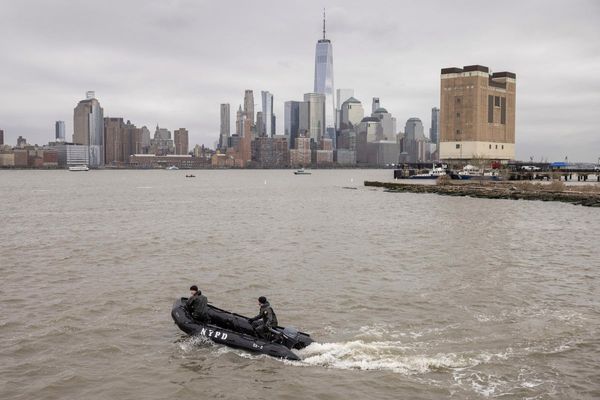
As the All India Congress Committee session concluded this week in Ahmedabad – only the sixth time in its 150-year-old history that it was held in Gujarat and the first since 1961 – there seems little clarity about how the party aims to stem the drift in the Indian National Developmental Inclusive Alliance.
The question of steering the national opposition alliance crept in only fleetingly in the AICC session – in a paragraph of the political resolution, a mention in Congress chief Mallikarjun Kharge’s concluding remarks and a tangential note in Rahul Gandhi’s address. However, was that enough to infer any roadmap that the party, which sees itself as the pivot of the bloc, has for the alliance, beyond state-wise manoeuvres?
Barring a few episodic flashes of joint protest in the Parliament, as in the recently concluded Budget session, the paralysis in the INDIA bloc’s functioning has become evident in the months following the 2024 Lok Sabha polls. The inability to present a united face in the Assembly polls, except in Jharkhand, and a slew of electoral defeats in state polls have posed serious questions about the bloc’s way forward.
In essence, the Congress’s response to these questions in the Ahmedabad session could only be seen in its platitude of reaffirming its commitment to the bloc. It didn’t drop any significant hint on the specific trajectory the party had in mind to navigate the bloc away from the frosty lull.
In the AICC’s political resolution, the mention of the INDIA bloc comes across as an afterthought; it was missing in the draft resolution. The paragraph about the bloc presents two ways in which the party looks at its allies: time-tested allies, and the parties that became allies because of the commonality of issues. While saying so, the party has exhorted the need to sustain the bloc on the principle of constructive cooperation. Party chief Kharge almost echoed the same. But, in some ways, Rahul’s remarks foregrounded a third element, in addition to the two earlier mentioned, as crucial to the bloc – the clarity about ‘anti-BJPism’ in posing a challenge to the current government at the Centre. In hinting at the efficacy of the Congress in spearheading this challenge in national politics, Rahul reminded allies how the party was the most suited to lead the national alliance.
Such reiteration, though not supplemented with an immediate work plan, could be seen in the context of growing murmurs of discontent and alternative claims regarding the bloc’s leadership.
First, by late 2024, TMC chief and West Bengal Chief Minister (CM) Mamata Banerjee had expressed her willingness to lead the Opposition INDIA bloc, making public her disapproval of its functioning. To reinforce that claim, allies like Sharad Pawar of the NCP (SP) and Lalu Prasad of the RJD lent support to her assessment of the bloc. In what was seen as a thinly disguised comment on the Congress assuming default leadership, NC leader and Jammu and Kashmir CM Omar Abdullah quipped, “leadership has to be earned”.
Second, the electoral adjustments between the bloc allies are having a rough ride; in fact, they have been non-starters in some cases. The AAP and Congress, for instance, failed to tie up for Haryana Assembly polls last year and Delhi Assembly polls early this year. This wasn’t new; even the TMC and Congress couldn’t strike an electoral pact in the Lok Sabha polls and contested against each other in West Bengal.
Third, the drift has also been fuelled by the nature of electoral verdicts that didn’t carry the momentum of 2024 Lok Sabha polls, which had brought some form of moratorium on the discontent within the bloc.
In the following poll cycle, the election in Haryana was pitched as a face-off between two national parties, and the Maharashtra polls as contests between the state versions of the Congress-led INDIA bloc and the BJP-led NDA. But the Congress’s failures in these polls gave one more reason for disgruntled allies to question its ability to take on the BJP, its principal opponent and the party in power at the Centre for more than a decade.
This could be traced to the understanding that the electoral philosophy of the bloc was to let the Congress have a say where it can directly fight the BJP and leave the regional strongholds for the regional parties. In doing so, the Congress incurred the risk of admitting to its diminished stature as an all-India force, and undervaluing its presence as the only national force in the bloc. But, the party did incur this risk and it entailed the dilemma that has centred around the messaging of primacy in the opposition space of national politics, and balancing it with its commonality of interests with regional political forces.
The Congress’s anxieties about being seen as the fulcrum of the INDIA bloc is part of its self-perception of being the default occupant of the national challenger space against the BJP-led political regime in the country. The eagerness of some regional forces to spread their wings in the national landscape has been an irritant for the party’s leadership. That, however, loses sight of the more basic reasons for the bloc’s current disorientation – the lack of a common action plan in different states and the trust deficit in electoral battles fought on different turfs.
The need for a reset in the bloc’s approach to alliance politics, beyond the occasional optics of parliamentary solidarity on some issues, couldn’t have escaped the Congress’s register. The fact that it didn’t go beyond merely rhetorical mention in the Ahmedabad session might reveal a sluggish indecision over how the party sees it in the next poll cycle and an edgy caution about how the regional allies might respond to a call for a reset.
If you liked this piece, let our reporters tell you why you should subscribe to Newslaundry.
Newslaundry is a reader-supported, ad-free, independent news outlet based out of New Delhi. Support their journalism, here.







